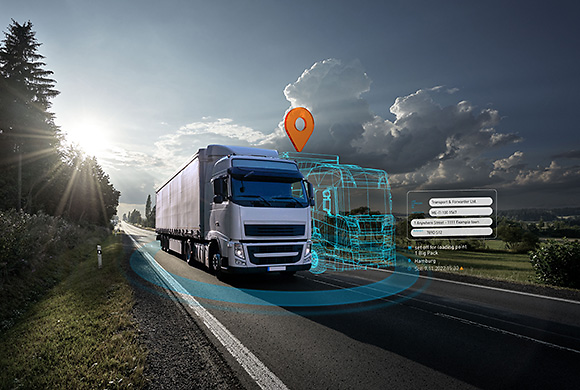The new silk road - logistics infrastructure Made in China

The People’s Republic of China will turn 100 in 2049. President Xi Jinping plans to transform the country into the world’s largest economy by then. As part of this plan, he wants to revive the ancient route known as the silk road. For over 2000 years, the silk road has connected Asia and Europe. Plans to expand it will encompass the largest transnational infrastructure project to date. But where exactly will the new silk road run? And how can the European logistics industry profit from it? Find out more, in our blog post.
Join the Smart Logistics System today to ensure you can keep your business profitable by adapting to the changing market conditions of tomorrow.
What is the new silk road?
The name references the historic silk road: a trade route from China to Europe that was approximately 6,400km long and used for goods transport from around 100 BCE well into modern times. In the middle ages, in particular, goods traded on the route included silk, gold and silver. The new silk road (officially called the Belt and Road Initiative in English) is a blanket term referring to intercontinental trade and infrastructure projects between China and many countries in Africa, Asia and Europe.
How the new silk road has expanded since 2013
Today, the new silk road connects around 60% of the global population. According to some estimates, around 40% of world trade takes place on the new silk road. Athens, Istanbul, Venice, Moscow, Rotterdam and Duisburg are central trading hubs on the route within Europe. Reviving this ancient trading route is the most important strategic project undertaken during President Xi Jinping’s time in office. China is investing in harbours, airports, railways, roads and hospitals. The plan calls for investments totalling approximately 900 billion dollars. According to official statistics from the Chinese government, 124 billion of those dollars had already been spent on projects by 2020. In less than 10 years, they were able to build around 80,000km of highways and countless new railway lines in China alone. The first European agreements were signed with Russia, Poland, Hungary, Bulgaria, Serbia and Croatia. These agreements have resulted in many new projects – from building new industrial zones to promoting trade and building power plants and hospitals.
The new silk road: logistics opportunities
China is one of the most important trading partners for Germany and many other European countries. Trade volumes were already quite high before the emergence of eCommerce, and have grown steadily ever since. No surprise, then, that many companies and economies want to expand their East-West supply chains.
- Shorter delivery times: It takes 4-6 weeks to transport goods from the Chinese municipality of Chongquing to Duisburg in Germany by sea, but only 12 days to transport them over land.
- Moderate prices: Freight travels quicker by rail, but it also costs less, comparatively, to send that way. Prices for sending freight by rail are somewhere between the cost of sending it by air and the cost of sending it by sea. However, it is important to note that trains cannot transport nearly as much freight as can be sent on a ship.
- New sales markets: The new trade route is expanding infrastructure and boosting economies, opening up whole new markets.
Hamburg is home to Europe’s largest rail port, and the company that runs it is looking forward to the opportunities that the Belt and Road Initiative will offer. “The new silk road is an important addition to maritime transport for the global supply chain from China to Germany and back,” according to Axel Mattern, the Chief Executive Officer at Port of Hamburg Marketing. There are already 235 railway routes that run between Hamburg and China (around 40 trains per week) and that number is slowly but surely growing.
How will the new silk road affect European logistics?
It is more important than ever that international supply chains run smoothly. So in principle, expanding road and rail networks for freight transport must be viewed as a positive. On the other hand, the Coronavirus pandemic has already convinced many commercial and industrial companies to direct their focus towards European partnerships, in order to reduce dependence on global suppliers.
Join the Smart Logistics System today to ensure you can keep your business profitable by adapting to the changing market conditions of tomorrow.
